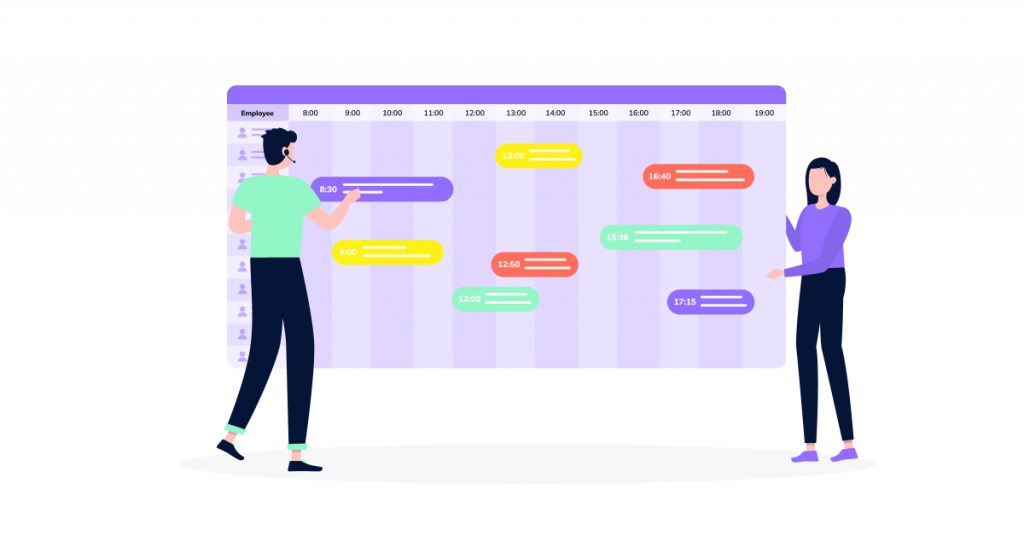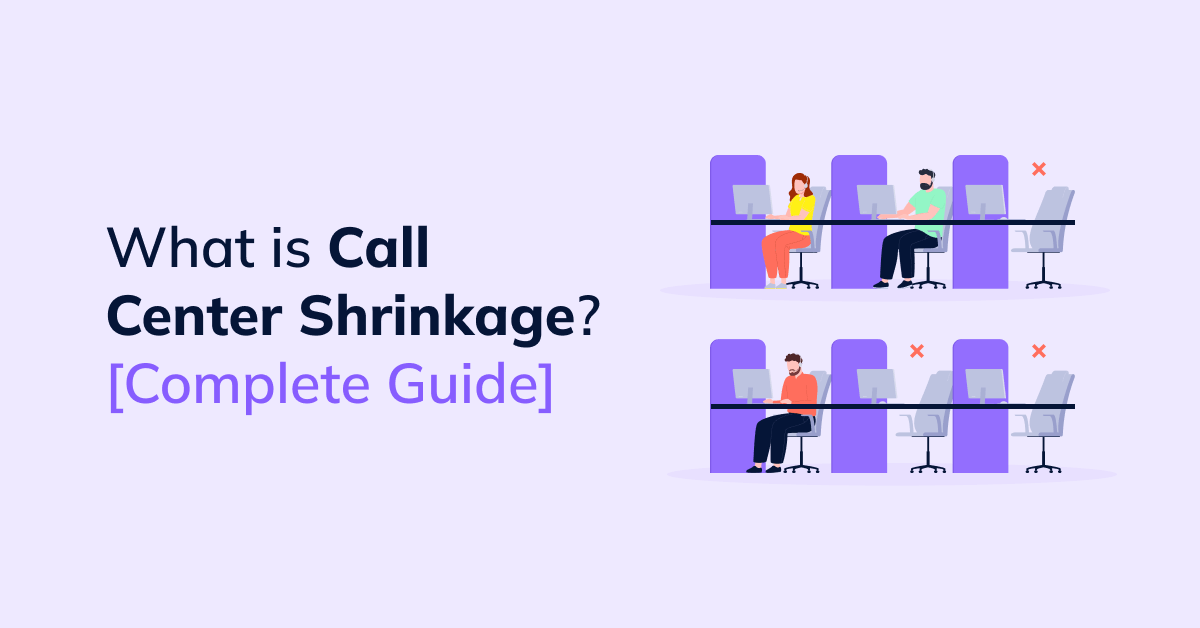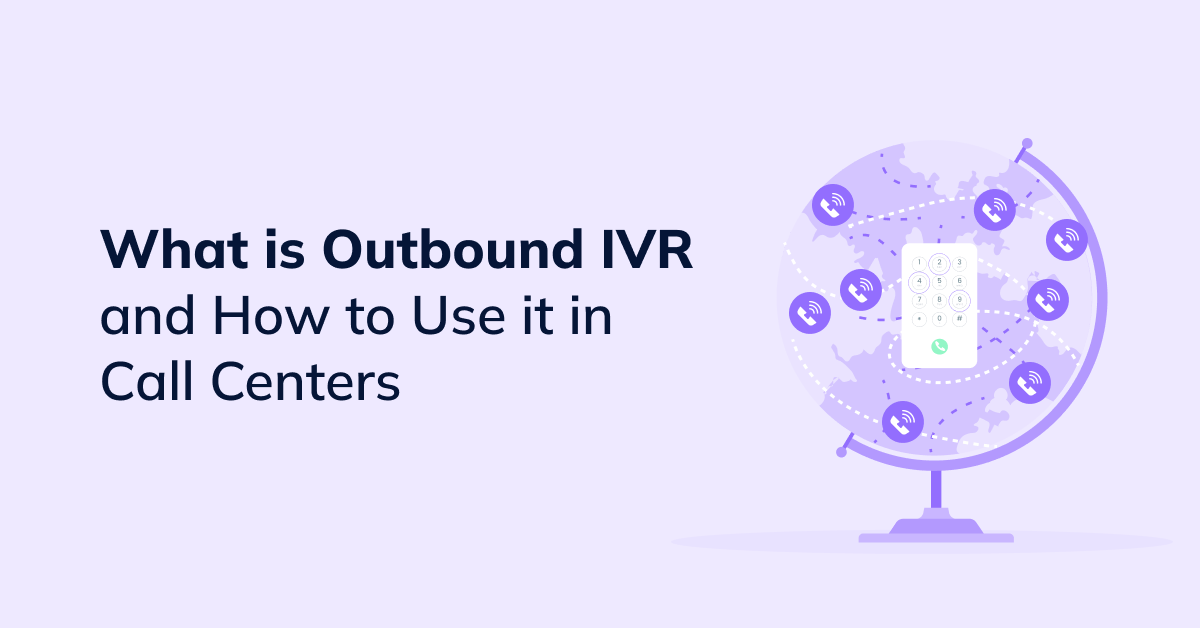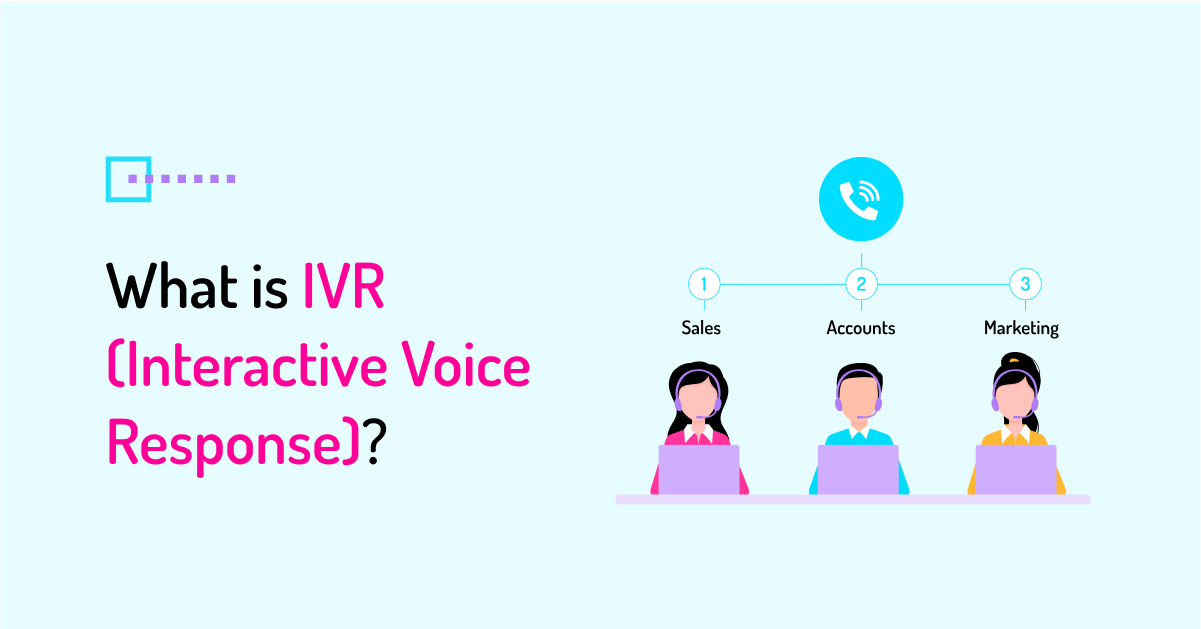For today’s consumers, getting their calls answered in a timely manner and receiving quick support without having to spend much time on hold is one of the top expectations. Since every agent can only handle one call at a time, it’s essential for call centers to ensure that there are always enough agents available to take customer calls at any given moment. Otherwise, calls might get missed, and customers might get stuck on hold, leading to increased customer frustration, more dropped calls, and reduced customer satisfaction. That’s why it’s critical to understand and properly manage shrinkage in a call center.
What is Call Center Shrinkage?
In the call center industry, shrinkage refers to the percentage of time call center agents are not available to handle customer calls during their scheduled hours. Shrinkage is basically the opposite side of agent utilization. While utilization is the number of hours call center reps are available to handle customer interactions, divided by the total paid hours, shrinkage is the difference between the time agents get paid to handle calls and the actual time they spend doing so. Thus, the shrinkage rate of 35% would equate to a utilization rate of 65%.
What are the Factors Causing Shrinkage in Call Centers?
Contact center shrinkage may be caused by either internal or external factors. Internal shrinkage occurs when agents are at work but are not available to handle customer interactions for a number of reasons. Managers usually have a certain level of control over these factors as most of them are predictable day-to-day activities happening inside the workplace and can be properly managed through strategic planning and organization. Others, however, like call avoidance, may require organizational changes on a deeper level.
Internal shrinkage factors
- Team meetings
- One-on-one meetings
- Training and coaching sessions
- Scheduled and unscheduled breaks
- System downtime
- Special projects
- Call avoidance
External shrinkage factors occur outside the workplace. While you can easily plan and manage some of them (like holidays and vacations), other factors like frequent absenteeism or arriving late can be eliminated only by addressing the root causes behind them. E.g., if an agent is routinely late, that may happen as a result of low motivation, poor engagement in the workplace, and burnout. You cannot eliminate this behavior unless the underlying reasons are identified and properly addressed.
External shrinkage factors
- Vacations/ paid time off
- Holidays
- Sick leaves
- Arriving late
- Leaving early
- Absenteeism
How to Calculate Shrinkage in a Call Center
Calculating shrinkage can be done in two different ways: one will show you the number of agents needed to match customer demand and handle your inbound call volume effectively and the other one will measure individual agent’s performance. For the first case, the call center shrinkage calculation formula is the following:

Example: If you require 100 agents to handle incoming customer calls during a one-hour period, but 30 agents are not available to do it at any given point during this period for various reasons, then shrinkage will be (100/70) x 100 = 142.8, according to the formula. That ultimately means you will need 143 agents to handle calls effectively and meet your SLAs (Service Level Agreements) during a one-hour period.
If you want to calculate the call center shrinkage rate in terms of hours to assess individual agent’s performance, the formula will look like this:
Shrinkage % = (Total hours of internal shrinkage + Total hours of external shrinkage / Total available working hours) x 100
Example: Let’s say an agent works 8 hours a day (which means 40 hours a week) and spends around 10 hours per week on lunch breaks, scheduled meetings, and training (internal shrinkage). In addition, an agent takes longer breaks and comes to work late, which means around 3 hours of external shrinkage time per week. In this case, the shrinkage rate would be ((10+3)/40) x 100 = 32.5%. That means the agent was not involved in handling customer calls for 32.5% of their scheduled work time.
What is an Acceptable Call Center Shrinkage Percentage?
The shrinkage percentage may vary across industries, however, most contact center industry professionals agree that the average shrinkage acceptable in call centers normally falls between 30 and 35%. Shrinkage is typically measured over a 12-month period. If your shrinkage is significantly higher than the average figure, you might need to dig deeper into the reasons behind that and address them to improve your numbers and increase your call center efficiency.
Why is Tracking Call Center Shrinkage Important?
Along with other metrics and KPIs (Key Performance Indicators), shrinkage is an important metric call center managers should be consistently tracking for two major reasons:
Forecasting staffing levels and improving call center efficiency
Measuring shrinkage is an essential part of workforce management and optimization in call centers. By monitoring shrinkage rates, managers can better determine the number of call center reps required to handle inbound and outbound calls in order to achieve the desired performance targets. They can also identify issues that affect and increase shrinkage and take timely measures to address them to improve contact center operations and overall performance. In addition, a high shrinkage rate can put excessive strain on agents, which may result in increased burnout and lowered productivity.
Ensuring efficient customer service and customer satisfaction
When the shrinkage rate is high, and there are not enough available agents to answer customer calls, that inevitably leads to longer wait times on hold for callers, which means more frustrated customers who cannot get through to a support agent and have their issues resolved promptly. As a result, call centers may experience longer Average Handle Times, increased Call Abandonment Rates, and lower Customer Satisfaction Scores (CSAT). That’s why it’s vital to keep an eye on shrinkage and effectively manage it to deliver quick support and a consistent customer service experience while meeting your SLAs.
How to Reduce Call Center Shrinkage
Call center managers and leaders can leverage the following strategies to minimize call center shrinkage:
Lower your inbound call volume with self-service options
One of the ways to reduce shrinkage in a call center is to naturally lower your overall inbound call volume and the number of calls that need to be handled by human agents by implementing self-service support options. According to a report by Higher Logic, 84% of consumers say that they try to solve support issues on their own before they attempt to contact customer support.
It could be an IVR (Interactive Voice Response) self-service menu that callers can use to get basic information or perform simple actions without needing to interact with a live agent. You can also implement chatbots or create a comprehensive knowledge base. It will help callers resolve issues independently 24/7, reducing the burden on your agents.
Use Workforce Management (WFM) tools
Many modern inbound and outbound call center software solutions include at least basic Workforce Management (WFM) capabilities. By making use of these WFM tools, managers can automate the entire shrinkage monitoring process, instead of calculating and tracking shrinkage manually with the traditional spreadsheet method. With WFM software tools, they can manage schedules more efficiently and easily monitor other essential agent productivity metrics and KPIs like occupancy rates to make more accurate predictions for staffing needs.
Schedule workplace activities during low call volume periods
Among other ways, reducing shrinkage requires a strategic approach when planning your workplace activities for agents, such as team meetings, one-on-ones, training, and coaching sessions. Scheduling and conducting these activities during non-peak hours and periods of typically low call volumes can help you reduce the shrinkage percentage and its negative impact on your call center operations and efficiency.

One important thing to remember is that you shouldn’t aim at lowering your shrinkage rate at the cost of reducing agent training and coaching. Lack of training and coaching practices may result in lower First Call Resolution (FCR) rates and longer Average Handle Times, which means reduced productivity of your team and lowered customer satisfaction scores, as a result.
Properly address absenteeism and call avoidance
Absenteeism, also known as Absence Rate, is a common challenge in call centers that negatively impacts productivity. It refers to when agents are absent from their workplace, mostly without prior notice, which means they are unable to handle customer interactions. Similarly, call avoidance presents another productivity challenge. It refers to all the strategies call center agents employ in the workplace to deliberately avoid handling customer calls.
Absenteeism and call avoidance ultimately increase your call center shrinkage – and both can occur for a number of reasons, including increased workplace stress and burnout, negative call center environment, lack of engagement and motivation, poor culture and morale, lack of adequate support from management, poor relationships between team members, etc. All that leads to a lack of satisfaction with the job. Managers can control shrinkage by identifying the root causes of absenteeism and call avoidance and properly addressing them.
Offer rewards to motivate agents to meet performance targets
Lack of recognition in the workplace can be a significant demotivating factor for agents, contributing to increased call center shrinkage and attrition rates. Considering the stressful nature of the call center job, it’s extremely important to recognize and reward agents when they demonstrate excellent performance or even for their day-to-day activities. That can help improve engagement, increase motivation and job satisfaction, as well as make agents more competitive and productive.
Call center managers can reward their team members in many different ways. These include recognition on leaderboards, acknowledging achievements during weekly team meetings, providing team-based incentives, or offering personalized rewards.
Make shrinkage management an ongoing process
The shrinkage rate may change occasionally due to customer-related factors. E.g., your call volumes may differ on a seasonal basis and throughout the day. When you know how your shrinkage rate changes during peak periods, you can allocate more staff to handle the increased call volumes, reducing shrinkage and ensuring your team is able to meet your SLAs. Likewise, when you consistently monitor and analyze employee-related shrinkage factors, you can take the necessary measures to prevent a high shrinkage rate. The key is making shrinkage management an ongoing process and part of your overall call center quality assurance.
There are various Erlang calculators available online that you can use to calculate your call center shrinkage rate. With contact center software, however, you can do it more effectively while also eliminating the need to do it manually.





 +18889082995
+18889082995
 +442036084160
+442036084160
 +97237237006
+97237237006